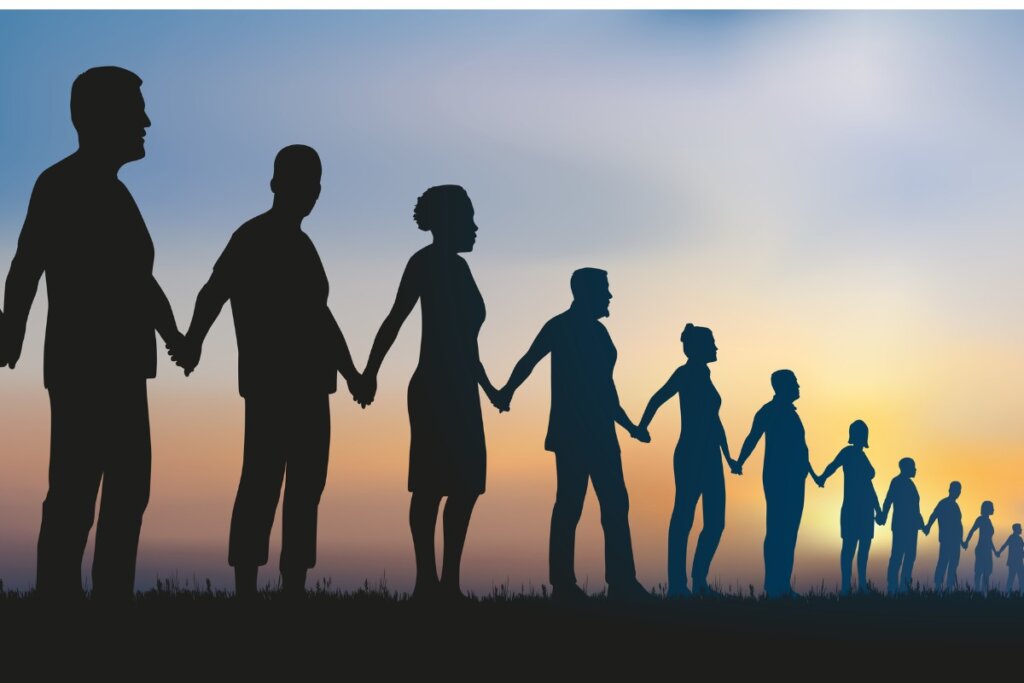Gilbert's Social Rank Theory to Explain Social Anxiety


Written and verified by the psychologist Gorka Jiménez Pajares
As a consequence of our gregarious nature, we relate to our entire universe, and to the essence of that universe: other human beings. Moreover, the way in which our ancestors behaved thousands of years ago is related to the way we behave in the 21st century. Gilbert’s social rank theory suggests an explanation for how we currently behave as a society and as individuals.
For millennia, the relationships we’ve experienced with each other as a species have provided us with invaluable resources. For example, information, knowledge, skills, and all the abilities that every self-respecting living organism is designed for; survival.
Today, this subject still fascinates and amazes many of us. Motivated by interaction, we’ve developed instruments as valuable as language, alphabets, writing, printing, and computers. None of this would likely exist without our gregarious nature. However, some people experience serious difficulties in their relationships and, consequently, suffer a great deal.

Social anxiety
The American Psychiatric Association (APA) defines social anxiety as the fear or anxiety experienced when an individual is exposed to possible examination by other people. In addition, they’re afraid of acting in a certain way or showing their symptoms of anxiety, because they believe that this will make them be judged more negatively.
At this point, we should distinguish between situations involving real interaction and non-interactive situations:
- Interactive situations. Those that involve contact and exchange of information with other people. Some examples might be starting and maintaining a conversation, going on a date with someone, going to a party, or saying no to something you don’t want to do.
- Non-interactive situations. These are situations that, despite not involving a real exchange of information with someone, do take place in a social context. Examples of these could be speaking before an audience, eating or drinking in public, using a public urinal, or entering a house when everyone else is already seated.
Social anxiety goes beyond shyness. It causes a deterioration in the daily functioning of the individual that’s so great that it threatens a characteristic biologically engraved in their genome. This is the need for contact with other people. In some cases, it becomes so dysfunctional that those suffering from social anxiety cut off all ties to the outside world and isolate themselves.
Social rank theory
For Gilbert and Trower, social anxiety has an explanation. They claimed it’s biologically preprogrammed and has its biological translation in the activation of brain systems as primitive as the assessment/response system. As a species, we developed these systems thousands of years ago to deal with threats within our reference group. Indeed, we’re a product of our own evolution. This is reflected in the different ‘layers’ in which the brain is organized :
- We have a reptilian brain that plays a fundamental role in competitive behaviors such as the acquisition and defense of territory. In other words, we appear threatening when we see something that wants to hurt us.
- As a species, we later developed a paleomammalian brain. This is the limbic system, which gave us the ability to experience feelings and transmit them to our environment. It’s thanks to the limbic system that we feel fear or pleasure.
- Finally, we developed the neomammalian brain. It was the step that differentiated us from all other living beings around us. Thanks to this technology of evolution, we became the dominant species on the planet. It allowed us, for the first time, to attribute meanings to things that happened to us.
To explain social anxiety, Gilbert made use of the above and postulated two great systems: defense and security.
Submission: when the defense system is activated
As a species, we live in groups. Moreover, as a consequence of our gregarious life, we’ve developed hierarchies that structure and unite the groups in which we live. Typically, the hierarchy of power swirls around the dominant member(s). The researcher, Michael Chance, called this the agonistic mode.
“The agonistic mode is a way of functioning that allows the subordinate members of the group to recognize and anticipate threats (for example, expressions of anger or rejection by the dominant member), to be able to react immediately by showing signs of submission and, thus, increase the chances of survival”.
-Belloch-
According to social rank theory, we’re genetically preprogrammed to be afraid of faces that express criticism or rejection. In fact, we’re not the only ones, as our primate relatives interpret eye contact as a threat. If they don’t want to enter into a dispute for the role of leader, they deflect it as a sign of submission.
To a large extent, this type of anxiety is mediated by power relations in the group. People with social anxiety disorder get hijacked by the evolutionarily oldest part of the brain: the paleomammalian brain. They feel such an extraordinary amount of fear that they automatically activate their defense systems.

Cooperation: the hedonic mode
The hedonic mode has motivated us to cooperate without the need to activate submissive behaviors. This is how we behave when we work together to achieve a goal. It’s what we did when we used to hunt. It’s also what happens when the scientists among us defend us all against a new virus.
There are also signs in the hedonic mode that aren’t threatening but signify calmness, security, and tranquility. They’re greetings, kisses, hugs, and other cooperative forms of human behavior. The hedonic mode is even more evident when it comes to polite behaviors (greeting, saying goodbye, or apologizing).
“The hedonic mode is an evolutionary achievement that has made it possible for members of the same species to cooperate in close proximity to one another, without triggering agonizing behaviors.”
-Belloch-
The hedonic mode changed everything. Members of the group stopped being a sign of threat and became a source of security. It’s in this regard that individuals with social anxiety have trouble. They struggle in identifying and recognizing safety cues. In fact, social anxiety is the result of the presence of danger and the absence of safety.
Thus, according to Gilbert’s social rank theory, people with social anxiety would be predisposed to use an agonistic mentality. In addition, they experience difficulties when constructing and putting into practice hedonic forms of social interaction.
All cited sources were thoroughly reviewed by our team to ensure their quality, reliability, currency, and validity. The bibliography of this article was considered reliable and of academic or scientific accuracy.
-
Belloch, A., Bonifacio, S., & Francisco, R. (2020). Manual de psicopatología.
-
Gómez-Ortiz, O., Casas, C., & Ortega-Ruiz, R. (2016). Ansiedad social en la adolescencia: factores psicoevolutivos y de contexto familiar. Behavioral Psychology/Psicología Conductual, 24(1), 29-49.
-
Caballo, V. E., Piqueras, J. A., Antona, C., Irurtia, M. J., Salazar, I. C., Bas, P., & Salavera, C. (2018). La autoestima y su relación con la ansiedad social y las habilidades sociales (No. ART-2018-105830).
This text is provided for informational purposes only and does not replace consultation with a professional. If in doubt, consult your specialist.








